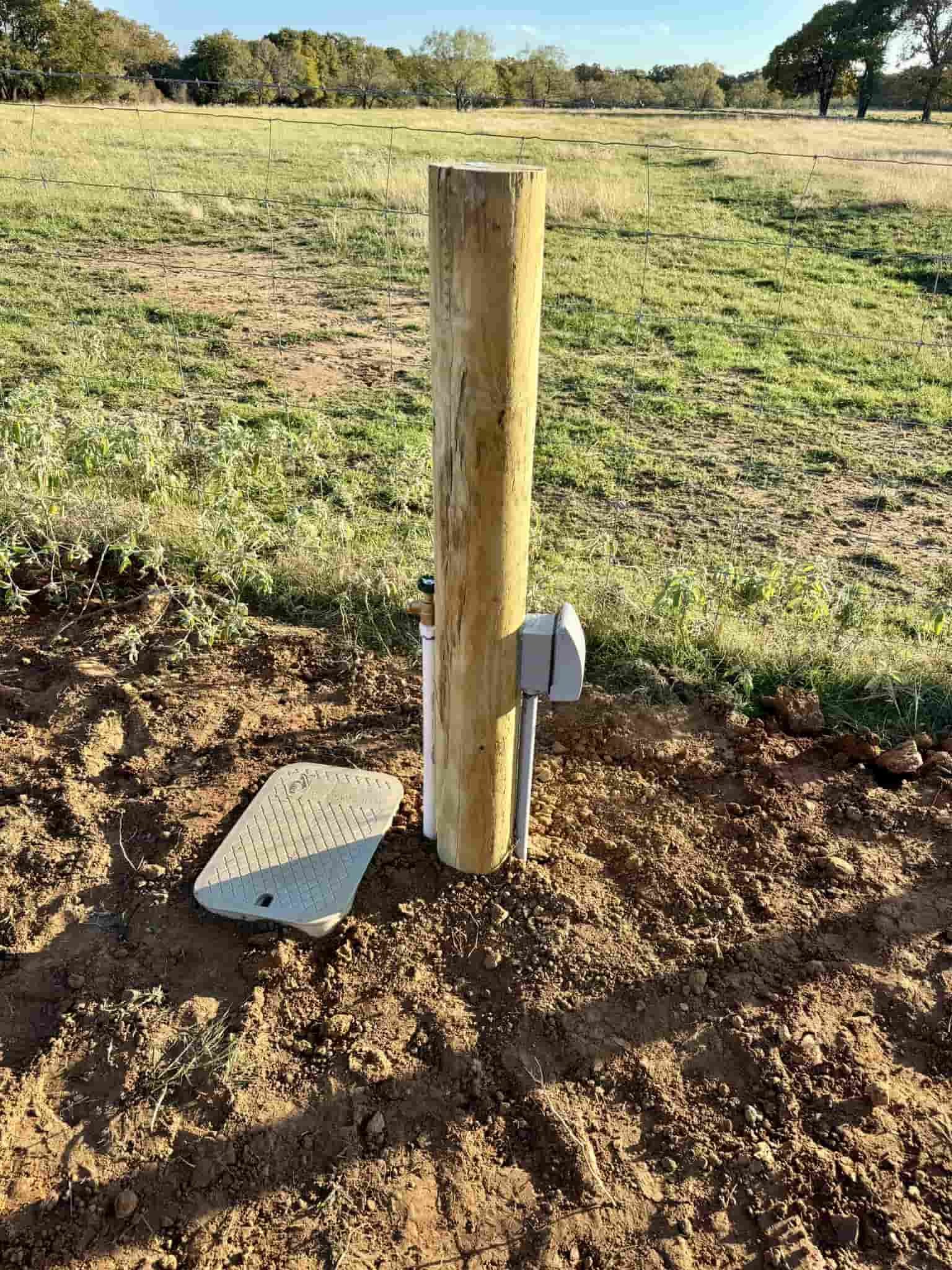New Water Line and Electric Service
12/1/2024
This November, we completed an essential upgrade on the ranch: installing a new water line and electric service to power a winter water heater. The project has made winter operations significantly easier, eliminating the hassle of dealing with frozen hoses and extension cords. Here’s how we tackled it and the benefits it provides.
From Well House to Weaning Pen
We started with a 60-foot trench from the well house to a weaning pen for the water line. Without a trencher attachment, we used a Danuser Intimidator tree puller and skid steer bucket to dig to a depth of 18 inches or more—safely below our frost line. This method worked but left a wider trench, requiring more effort to backfill.
For this section, we installed 1.5" PVC pipe. Although PVC is durable, it requires cement joints, making it more labor-intensive than other options. In the future, we plan to extend this water line using polyethylene (poly) pipe. Poly pipe is easier to handle, does not require cementing, and is well-suited for long runs. However, at the time of this project, all the poly pipe at our local supply store was on back order, so PVC was our only option.


160 Feet of Dual Trenches
From the weaning pen, we extended the water line another 160 feet and added a second trench for a 120-volt electric line to power a 1500-watt water heater. For this section, we rented a trencher attachment, which made the job faster and cleaner. Both trenches were completed in under an hour, and the clean cuts made backfilling much easier.

Practical Features for Winter Management
At each hose bib, we installed a valve system housed in a valve box filled with gravel. This system includes:
- Ball Valves: To control incoming and outgoing water.
- Drain Valves: To drain all water from the hose bib back into the gravel-filled valve box.
This setup makes it easy to manage water use during a freeze. We can turn the water on to pressurize the lines when needed, then drain the hose bibs to ensure no water remains above the frost line. This design minimizes the risk of freezing and keeps winter maintenance straightforward.


Why It Matters
This upgrade has eliminated many of the common winter challenges we face on the ranch, such as dealing with frozen hoses and makeshift above-ground extension cords. Now, water and power are securely routed below the frost line, providing reliable access for our cattle even in freezing temperatures.
The system also supports our rotational grazing setup. The middle pasture, which remains empty in winter, now easily provides water to the main herd and bull on one side and non-breeding cattle on the other.
By planning ahead and implementing features like the valve box and separate trenches, we’ve created a system that’s efficient, resilient, and far less hassle in cold weather. This project has been a huge step forward for our operations—and we’re ready for whatever winter throws at us!